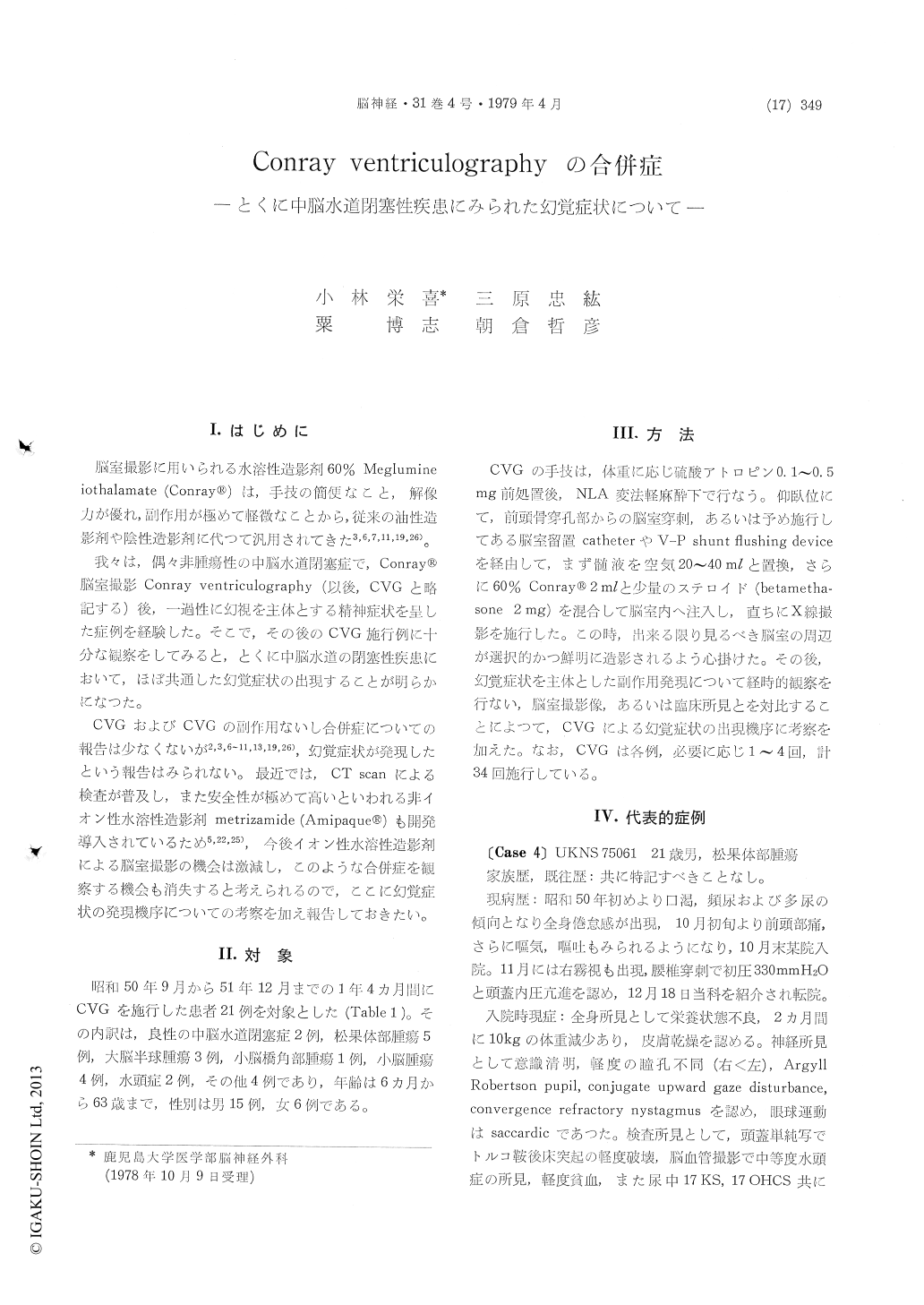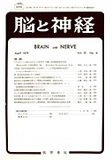Japanese
English
- 有料閲覧
- Abstract 文献概要
- 1ページ目 Look Inside
I.はじめに
脳室撮影に用いられる水溶性造影剤60% Meglumineiothalarnate (ConrayR)は,手技の簡便なこと,解像力が優れ,副作用が極めて軽微なことから,従来の油性造影剤や陰性造影剤に代つて汎用されてきた3,6,7,11,19,26)。
我々は,偶々非腫瘍性の中脳水道閉塞出症で,ConrayR脳室撮影Conray ventriculography (以後,CVGと略記する)後,一過性に幻視を主体とする精神症状を呈した症例を経験した。そこで,その後のCVG施行例に十分な観察をしてみると,とくに中脳水道の閉塞性疾患において,ほぼ共通した幻覚症状の出現することが明らかになつた。
Hallucinatory symptoms as a complication of Conray ventriculography (CVG) have been never reported. However, the authors have recently experienced identical hallucinatory symptoms insome of CVG performed cases, especially in the patients of aqueductal occlusive diseases.
Comparing the Conray ventriculograms with the clinical symptoms, we have considered the mechanisms of hallucinatory symptoms and con-cluded as follows :
1) Transient hallucinatory symptoms appeared in 6 cases (28.6%) among 21 cases in whom CVG were performed.
2) In the above 6 cases, 2 were benign aqueductal occlusive diseases and 4 were pineal tumors. Conray ventriculograms showed complete occlusion of the aqueduct in 4 cases (66.7%).
3) In non-occlusive cases of the aqueduct, hallucinatory symptoms rarely appeared (13.3%), and were slighter, and shorter in duration than in the occlusive cases.
4) Hallucinatory symptoms appeared fitfully just on the day or next when the CVG was performed. They were chiefly consist of the visual hallu-cinations such as moving small animals, cars, persons and so on.
5) As a producing mechanism of such symptoms, we consider that Conray might influenced selectively on the wall of the posterior part of the third ventricle and the upper aqueduct, and might evoked the neuronal activity underneath them. Then visual hallucinations, which were assumed to be identical with hallucinose pedonculaire (L'hermitte) or brainstem hallucinosis, could appeared. We thought these facts could be contributory to the evidences of the mechanism of the subcortical hallucination.

Copyright © 1979, Igaku-Shoin Ltd. All rights reserved.


